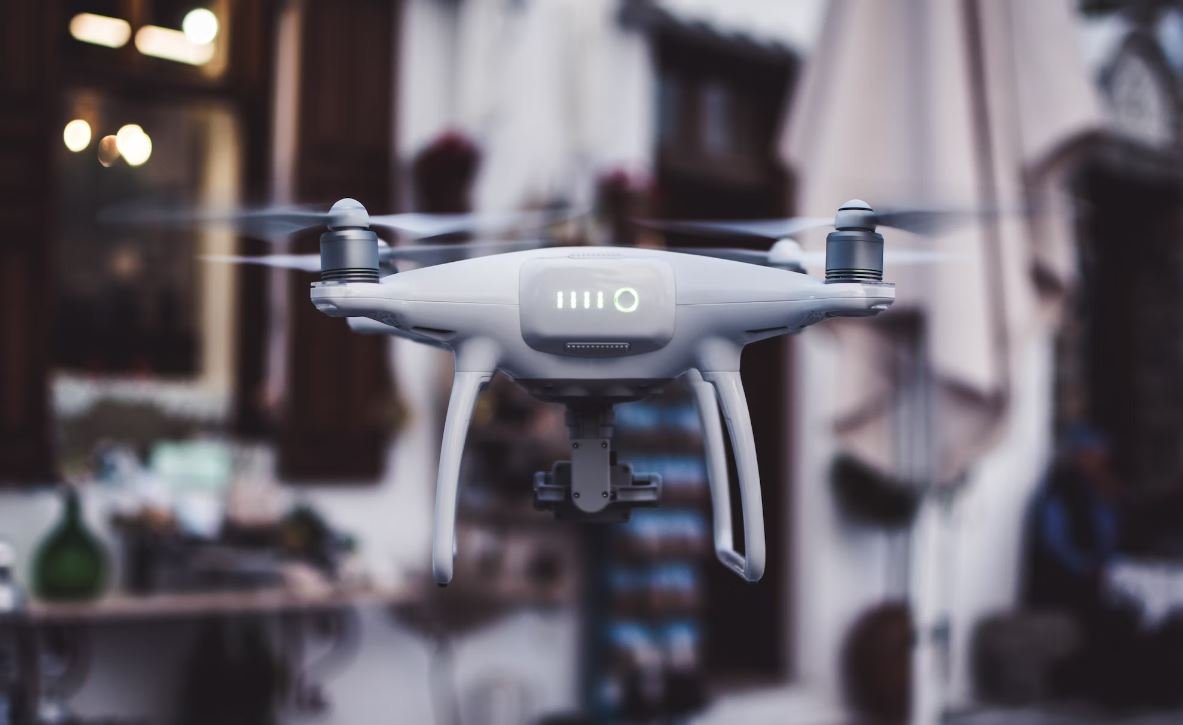Is AI Really AI?
In today’s rapidly advancing technological landscape, the term “AI” or “Artificial Intelligence” is often thrown around. We hear about AI-powered devices, AI algorithms, and even AI-driven robots. But what exactly is AI and how is it different from other types of technology? In this article, we will explore the definition of AI, its capabilities, and whether or not what we commonly refer to as AI is truly AI.
Key Takeaways:
- AI refers to the ability of a machine or software to mimic or replicate intelligent human behavior.
- True AI possesses advanced learning capabilities and the ability to analyze complex data.
- Many so-called “AI” applications today are actually machine learning or rule-based systems.
- It is important to distinguish between general AI and narrow AI to fully understand their capabilities.
Artificial Intelligence, in its purest form, refers to the ability of a machine or software to mimic or replicate intelligent human behavior. **Despite the broad representation of AI in popular media and mainstream conversations**, true AI is much more complex and limited in its application. True AI possesses advanced learning capabilities, the ability to analyze complex data, and make autonomous decisions based on that analysis. Essentially, it works and thinks like a human, independently.
However, what we often refer to as AI today does not meet this definition. *Many so-called “AI” applications are simply powered by machine learning algorithms*, which are designed to analyze massive amounts of data and make predictions or perform specific tasks based on patterns found in the data. Machine learning systems are trained on specific data sets and lack the ability to generalize or learn beyond the data they were trained on. They are as good as the data they were trained on, and they cannot adapt their behavior to new situations or apply knowledge from one domain to another.
So, is what we commonly refer to as AI really AI? The answer is not a straightforward yes or no. The term “AI” has become a catch-all phrase, used to describe a wide range of technologies that exhibit certain human-like behavior. While these technologies may not possess true AI capabilities, they can still be incredibly powerful and useful in their own right. By understanding the distinctions between different types of AI, we can better appreciate the abilities and limitations of the technologies that exist today.
The Difference Between General AI and Narrow AI
General AI, also known as strong AI or human-level AI, is an AI system that possesses the ability to understand, learn, and apply knowledge across multiple domains or tasks. It would have a level of intelligence that is on par or even surpassing human intelligence. **Imagine a machine that can learn anything a human can learn, and perform any intellectual task that a human can perform, it would be capable of true general AI**.
On the other hand, narrow AI, also known as weak AI or specific AI, refers to AI systems that are designed for a specific task or a narrow set of tasks. These systems are typically trained on large datasets specific to the task they are designed for. For example, a voice assistant like Siri or Alexa is a narrow AI system that is trained to understand and respond to voice commands. While it may seem intelligent, it is limited to the tasks it was specifically programmed and trained for. **Narrow AI focuses on specific tasks or domains and does not possess the same level of versatility as general AI**.
The Evolution of AI
| Year | Advancements/Discoveries |
|---|---|
| 1950s | The birth of AI as an academic discipline and the development of the Turing Test. |
| 1960s | The introduction of rule-based systems and early computer vision. |
| 1970s | Machine learning algorithms gain popularity, leading to the development of algorithms like Decision Trees and Neural Networks. |
- In the 1980s and 1990s, AI experienced periods of success and setbacks, known as “AI winters,” where progress and funding slowed down due to unmet expectations.
- In recent years, advancements in deep learning and neural networks have allowed for significant progress in AI applications such as image and speech recognition.
Although the field of AI has made remarkable strides since its inception, it is important to note that we are still far from achieving true general AI. *The goal of achieving a machine that can truly replicate human-like intelligence across various domains remains a grand challenge.* However, the advancements we have made in narrow AI, machine learning, and deep learning have undoubtedly revolutionized various industries and significantly enhanced automation and decision-making processes.
| AI Type | Capabilities | Limitations |
|---|---|---|
| General AI | Can understand, learn, and apply knowledge across multiple domains or tasks. | Does not yet exist, and achieving it is a grand challenge. |
| Narrow AI | Designed and trained for specific tasks, performing them efficiently. | Lacks versatility and cannot generalize to new situations or tasks. |
In conclusion, while what is commonly referred to as AI may not possess true AI capabilities, the technologies that exist today still bring immense value. Narrow AI systems have proven to be incredibly powerful and useful in their respective domains. It is important to understand the distinctions between general AI and narrow AI to fully appreciate their capabilities and limitations.

Common Misconceptions
Artificial Intelligence is Similar to Human Intelligence
One common misconception about AI is that it possesses human-like intelligence. However, AI is built on algorithms and statistical analysis, whereas human intelligence involves complex cognitive processes and emotions.
- AI relies on data-driven decision-making processes
- AI lacks self-awareness and consciousness
- AI cannot replicate human emotions or moral reasoning
All AI Systems are Fully Autonomous
Another misconception is that all AI systems operate autonomously without human intervention. In reality, many AI systems require human supervision, guidance, and feedback to function correctly and make accurate decisions.
- AI systems often require human training and data input
- Human oversight is essential to ensure the performance and reliability of AI systems
- AI systems may have limitations and biases that need human intervention to rectify
AI Will Replace Human Workers
AI technology has advanced rapidly, leading to concerns that it will replace many human jobs. However, the role of AI is to augment human capabilities rather than replace them entirely.
- AI can automate certain tasks, but it enhances human productivity in various industries
- Human creativity and critical thinking cannot be fully replicated by AI
- New jobs and roles are emerging alongside AI, creating opportunities for human workers
AI is Always Objective and Bias-Free
Contrary to popular belief, AI systems can be biased due to the data they are trained on or the algorithms used. This bias can perpetuate existing societal prejudices and discrimination.
- AI algorithms may inherit biases from biased training data
- AI systems need careful monitoring and evaluation to mitigate bias
- AI can amplify existing social and economic inequalities if not properly regulated and designed
All AI Systems are Superintelligent and Capable of Solving Everything
Many people have an exaggerated perception of AI’s capabilities and believe it can solve any problem. While AI has made remarkable progress, it still has limitations and cannot solve every complex problem.
- AI systems excel in specific tasks, but lack a general understanding like humans
- AI may encounter difficulties in handling novel situations and adapting to changes
- Humans are required to define the scope and objectives of AI systems

AI Chatbot vs Human Customer Service
AI chatbots have become increasingly popular in customer service, but how do they compare to human customer service representatives? This table shows a comparison of the two:
| Aspect | AI Chatbot | Human Customer Service |
|---|---|---|
| Response Time | Instant | Variable |
| Accuracy | High | Variable |
| Emotional Understanding | Low | High |
| Problem-solving | Structured | Adaptive |
| Cost | Lower | Higher |
AI in Healthcare vs Traditional Methods
The use of AI in healthcare has transformed various aspects of the industry. Here is a comparison of AI and traditional methods:
| Aspect | AI in Healthcare | Traditional Methods |
|---|---|---|
| Diagnosis | Fast and accurate | Prone to human errors |
| Treatment Planning | Personalized | Generic |
| Monitoring | Real-time and continuous | Periodic and manual |
| Cost | Varies depending on implementation | Fixed and often high |
| Ethical Considerations | Requires careful handling of patient data | Depends on human ethics |
Artificial Intelligence in Advertising
The use of AI in advertising has revolutionized the industry in multiple ways. Here is a comparison of AI-driven ads and traditional advertising methods:
| Aspect | AI-Driven Ads | Traditional Methods |
|---|---|---|
| Targeting | Precision targeting based on data analysis | Broad targeting segments |
| Personalization | Highly personalized content | Generic content |
| Automation | Automated ad placement and optimization | Manual ad placement and optimization |
| ROI | Optimized for higher return on investment | Variable return on investment |
| Ad Fraud | Advanced fraud detection algorithms | Prone to ad fraud |
AI in Transportation: Autonomous Vehicles vs Human Drivers
Autonomous vehicles powered by AI technology are gradually changing the transportation landscape. Let’s compare them with human drivers:
| Aspect | Autonomous Vehicles | Human Drivers |
|---|---|---|
| Safety | Can reduce human errors | Prone to errors due to distraction or fatigue |
| Efficiency | Potential for optimized traffic flow | Traffic congestion and inefficiencies |
| Distracted Driving | Unaffected by distractions | Can be significantly affected |
| Learning | Can continuously learn from driving experiences | Can improve skills over time |
| Human Interaction | No human interaction required | Human interaction is essential |
AI in Education: Online Learning vs Traditional Classroom
AI has brought advancements to education, particularly in the form of online learning. Here’s a comparison between online learning and traditional classroom education:
| Aspect | Online Learning | Traditional Classroom |
|---|---|---|
| Flexibility | Self-paced and flexible schedules | Fixed class schedules |
| Personalization | Adaptive learning experiences | Individual attention from teachers |
| Accessibility | Accessible from anywhere with an internet connection | Restricted to physical classroom location |
| Collaboration | Virtual collaboration with peers | Face-to-face collaboration |
| Evaluation | Automated grading and feedback | Direct teacher grading and feedback |
AI in Entertainment: Virtual Reality vs Traditional Entertainment
Virtual reality (VR) powered by AI technology has revolutionized the entertainment industry. Let’s compare VR with traditional entertainment experiences:
| Aspect | Virtual Reality | Traditional Entertainment |
|---|---|---|
| Immersion | Offers highly immersive experiences | Depends on individual imagination |
| Interactivity | Active participation and interaction | Passive viewing or listening |
| Reality Simulation | Can simulate realistic environments | Limited to real-world constraints |
| Accessibility | Accessible with VR devices and platforms | Accessible through various media |
| Sensory Experience | Engages multiple senses | Primarily visual and auditory |
AI in Finance: Robo-advisors vs Human Financial Advisors
Robo-advisors powered by AI technology have become popular in the finance industry. Here’s a comparison between robo-advisors and human financial advisors:
| Aspect | Robo-Advisors | Human Financial Advisors |
|---|---|---|
| Cost | Lower fees | Higher fees |
| Accessibility | Available 24/7 | Limited availability |
| Personalization | Based on algorithms and data analysis | Based on personal relationships |
| Emotional Bias | Unaffected by emotional biases | Subject to emotional biases |
| Expertise | Relies on AI-powered insights | Depends on individual expertise |
AI in Agriculture: Precision Farming vs Traditional Farming
Precision farming driven by AI has revolutionized the agricultural sector. Let’s compare precision farming with traditional farming methods:
| Aspect | Precision Farming | Traditional Farming |
|---|---|---|
| Efficiency | Optimized resource utilization | Resource-intensive |
| Yield | Higher crop yield potential | Depends on traditional practices |
| Monitoring | Real-time crop and soil monitoring | Periodic inspections |
| Environmental Impact | Reduces environmental footprint | Can have negative environmental effects |
| Data Analysis | Utilizes data for decision-making | Relies on experience and observation |
AI in E-commerce: Recommendations Systems vs Traditional Marketing
AI-driven recommendation systems have transformed the e-commerce industry. Let’s compare them with traditional marketing methods:
| Aspect | Recommendation Systems | Traditional Marketing |
|---|---|---|
| Personalization | Highly personalized recommendations | Mass marketing approach |
| Efficiency | Real-time and automatic recommendations | Time-consuming manual processes |
| Cross-Selling | Effective cross-selling opportunities | Depends on customer purchasing behavior |
| Customer Experience | Enhances customer experience with tailored suggestions | Depends on marketing strategies |
| Return on Investment (ROI) | Potential for increased sales and customer retention | Influenced by marketing efforts and strategies |
In conclusion, AI has revolutionized various industries, transforming traditional methods into more efficient, personalized, and data-driven processes. While AI technologies have their advantages, it is important to carefully assess their implementation, considering ethical considerations, human interaction, and potential limitations. As AI continues to evolve, its integration into different sectors will likely bring further advancements and opportunities.
Is AI Really AI? – Frequently Asked Questions
Q: What is AI?
A: AI stands for Artificial Intelligence, which refers to the development of computer systems capable of performing tasks that would typically require human intelligence.
Q: How does AI work?
A: AI utilizes various techniques such as machine learning, deep learning, and natural language processing to process and analyze large amounts of data, recognize patterns, and make decisions or predictions.
Q: What are the different types of AI?
A: AI can be categorized into three main types: narrow AI, general AI, and superintelligent AI. Narrow AI focuses on specific tasks, while general AI aims to mimic human intelligence across a wide range of tasks. Superintelligent AI refers to AI systems that surpass human intelligence capabilities.
Q: Can AI think like humans?
A: AI can simulate human-like thinking and decision-making processes to a certain extent but does not possess consciousness or emotions akin to human thinking.
Q: Is AI just advanced programming?
A: AI involves advanced programming techniques, but it goes beyond traditional programming by enabling machines to learn from data and improve performance over time without explicitly being programmed for every possible scenario.
Q: What are some real-life applications of AI?
A: AI is used in various fields, including healthcare, finance, transportation, marketing, and entertainment. It powers technologies like voice assistants, image recognition systems, autonomous vehicles, and personalized recommendations on streaming platforms.
Q: Are chatbots considered AI?
A: Chatbots generally fall under the category of narrow AI, as they are designed to converse with users and perform specific tasks using predefined rules or algorithms. More advanced chatbots may leverage machine learning techniques to improve their responses.
Q: Can AI replace human jobs?
A: AI has the potential to automate certain tasks and processes, leading to changes in the job market. While some jobs may be replaced, AI also creates new opportunities and can enhance human productivity and decision-making in various fields.
Q: Is AI dangerous or beneficial?
A: AI can have both positive and negative impacts. It has the potential to bring significant benefits in fields like healthcare, scientific research, and automation. However, there are concerns about ethical considerations, privacy, job displacement, and the potential for misuse.
Q: Will AI surpass human intelligence?
A: While the idea of AI surpassing human intelligence (superintelligent AI) is a topic of debate, there is no consensus among experts regarding the timeline or feasibility of achieving such a level of artificial intelligence.




